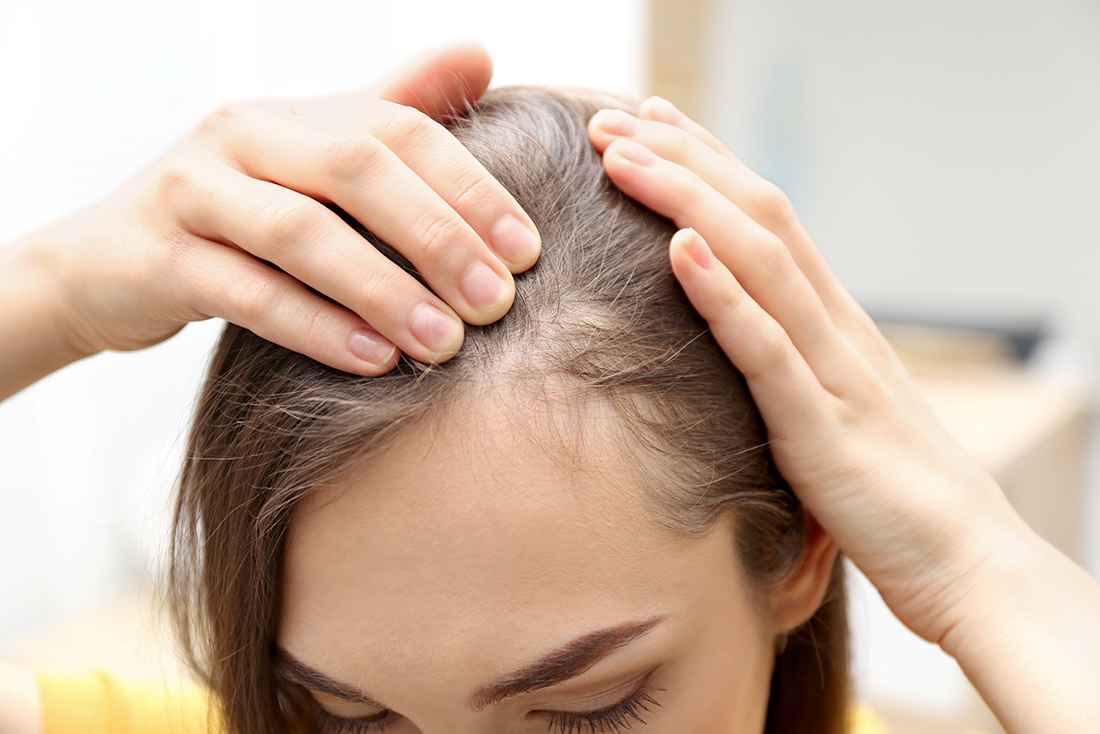Working Time
-
Mon - Sat :
10:00am - 01:00pm
05:00pm - 08:00pm
Contact Info
-
Phone: 7624008000
- recombhtc@gmail.com
Hair Loss in Female

Hair is often considered a crucial element of physical attractiveness and a means of expressing one's individuality. This is why women invest significant time and money in grooming, dyeing, drying, curling, and styling their hair. They strive to keep their hair looking its best. However, when they start experiencing hair loss, it can be extremely distressing. It is particularly challenging to cope with hair loss in a society that views hair as a symbol of youth, beauty, and good health. Consequently, women who lose their hair may feel less attractive and suffer from diminishing self-esteem.
Hair loss in women differs significantly from that in men. Women usually do not experience a sudden receding hairline. Instead, hair loss begins with a widening part and uniform thinning across the scalp. If left untreated, this thinning can extend to the sides of the scalp, affecting the temples and areas above the ears. In rare instances, women may experience partial or complete baldness.
Most women notice hair loss in their 40s or 50s, but it can occur at any age. Hair loss in women can be gradual or sudden, temporary or permanent, depending on the underlying cause.
Causes of Hair Loss in Women
- Female Pattern Baldness: This condition, also known as androgenetic alopecia, involves diffuse thinning of hair across the scalp. It is primarily hereditary.
- Telogen Effluvium: Sudden body changes, such as major surgery, accidents, or extreme stress, can lead to increased hair shedding in this condition.
- Trichotillomania: This disorder involves an irresistible urge to pull out hair from the scalp or other parts of the body, causing patchy hair loss and even baldness in some cases.
- Polycystic Ovary Syndrome (PCOS): PCOS, caused by an imbalance in male and female sex hormones, is a common cause of hair loss in women.
- Lupus: Lupus is a chronic autoimmune disease where the immune system attacks hair follicles, leading to hair loss. It is commonly seen in women of childbearing age.
- Hypothyroidism: An underactive thyroid gland can also contribute to hair thinning in women.
- Pregnancy: Women may experience sudden hair loss during or after pregnancy. This hair loss is usually temporary.
- Menopause: During menopause, women may notice clumps of hair falling out, and in some cases, bald patches on the scalp. This is due to a decrease in estrogen levels and an increase in testosterone levels.
- Anemia: Iron deficiency anemia is a significant cause of hair loss in women.
- Chemotherapy: Chemotherapy can cause temporary hair loss, but hair usually regrows after treatment ends.
- Medications: Certain medications, such as birth control pills, antidepressants, and blood thinners, can lead to excessive hair loss.
- Stress: High levels of stress can cause significant hair shedding, leading to thinning hair.
- Poor Diet: Overconsumption of vitamin A, a lack of protein, or a deficiency in vitamin B (biotin) can contribute to hair loss in women.
Women Hair Loss Treatments
In some instances, maintaining a nutritious diet and addressing hormonal imbalances can help prevent excessive hair loss. However, for other cases, here are some effective treatments for hair loss:
Medication: Minoxidil (Rogaine) is the only FDA-approved medication for women to halt hair loss. This option is also suitable for those with a V-shaped hairline, commonly known as Widow’s peak.
PRP Therapy: This procedure involves drawing a small amount of blood from the patient, which is then centrifuged to concentrate growth factors. The resulting plasma is injected into the scalp areas experiencing hair loss.
Laser Therapy: Low-Level Laser Light Therapy (LLLT) involves exposing the hair to laser light to stimulate hair growth.
Hair Transplantation: This procedure involves moving hair from a donor area to areas of the scalp experiencing thinning or baldness. We specialize in providing top-quality hair transplants using the Follicular Unit Extraction (FUE) technique, which is the latest method in hair transplantation.


